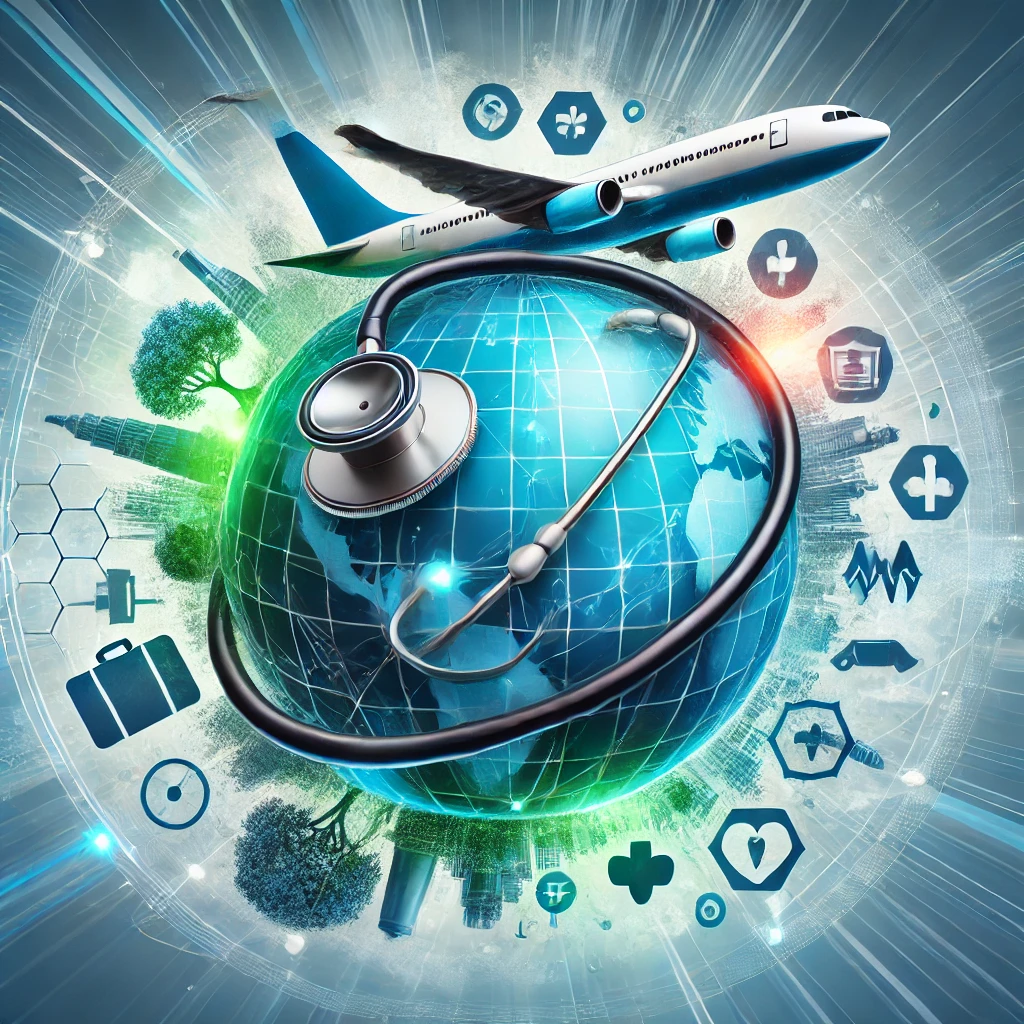Introduction
In recent years, the landscape of healthcare has transformed significantly, largely driven by the rising demand for medical tourism. This burgeoning industry enables patients to travel abroad for medical treatments, often seeking cost-effective alternatives and specialized care unavailable in their home countries. As globalization continues to impact various sectors, medical tourism is reshaping how individuals approach healthcare, leading to multiple trends that influence their choices.
The Growth of Medical Tourism
According to a recent analysis by Persistence Market Research, the global medical tourism market is witnessing remarkable growth. The report indicates a year-on-year (YoY) growth of 10.2% in 2024, with an overall market value projected to reach US$ 441 billion by 2031. This growth trajectory, predicted to maintain a compound annual growth rate (CAGR) of 10.2%, highlights the increasing attractiveness of medical tourism to patients worldwide. As healthcare costs rise and the quality of care varies, more individuals are turning to international options for their medical needs.
Key Factors Driving Medical Tourism
Several factors contribute to the growth of the medical tourism industry, influencing the decisions of healthcare consumers globally.
Cost-Effectiveness
One of the primary motivations for patients seeking medical treatments abroad is the cost difference. Medical procedures in countries like India, Thailand, and Mexico can be significantly cheaper than in Western countries, often by as much as 50% to 80%. This price disparity is especially appealing to patients without adequate health insurance or those facing high out-of-pocket costs. For instance, elective surgeries, dental procedures, and cosmetic treatments are often less expensive abroad, prompting many to consider international care as a viable option.
Quality of Care
While cost savings are essential, patients are also increasingly aware of the quality of care they can receive abroad. Many destinations known for medical tourism have invested in state-of-the-art facilities and technology. Moreover, numerous hospitals in countries such as Singapore and Malaysia have received international accreditations, reassuring patients that they will receive care comparable to, or even better than, what they might find in their home countries. Furthermore, patients often benefit from shorter waiting times for treatments, making immediate care more accessible.
Availability of Specialized Treatments
Certain countries have become renowned for specific treatments and procedures, drawing patients seeking specialized care. For example, Thailand is well-known for its cosmetic surgery, while India has established itself as a leader in complex cardiac surgeries and organ transplants. Patients are increasingly willing to travel long distances to access expertise and technologies unavailable in their local healthcare systems. This trend highlights a growing consumer focus on quality, expertise, and outcome-based care rather than proximity to home.
Trends Shaping Consumer Choices
As the medical tourism market continues to expand, several trends are shaping how patients make their healthcare decisions.
Telemedicine and Virtual Consultations
The rise of telemedicine has revolutionized the initial consultation process for medical tourists. Patients can now connect with specialists abroad via video consultations, allowing them to receive expert opinions without incurring travel costs initially. This trend enables patients to make informed decisions based on their conditions and treatment options, ultimately enhancing their overall experience. Virtual consultations also help build trust between patients and healthcare providers, making patients feel more confident about traveling for treatment.
Increased Awareness and Access to Information
With the advent of the internet and social media, patients have greater access to information about medical treatments abroad. Online platforms allow individuals to research hospitals, read patient reviews, and compare costs and services. Patients are now more informed than ever, empowering them to make educated choices about their healthcare. Social media platforms also enable the sharing of personal experiences, further influencing consumer decisions and highlighting the success stories of medical tourists.
Wellness Tourism Integration
Medical tourism is increasingly intersecting with wellness tourism as patients seek holistic approaches to health. Many facilities now offer packages that combine medical treatments with wellness services, such as spa therapies, nutrition counseling, and fitness programs. This trend reflects a growing consumer desire for comprehensive care that addresses both medical and lifestyle aspects. Facilities that promote wellness alongside medical care are attracting a broader clientele, enhancing the appeal of medical tourism.
Government Support and Infrastructure Development
Governments in various countries are recognizing the economic potential of medical tourism and actively supporting the sector’s growth. Investments in healthcare infrastructure, marketing campaigns, and regulatory frameworks are becoming more common. Countries such as India, Thailand, and Turkey are promoting their medical tourism sectors, offering incentives for foreign patients. This governmental backing not only enhances the quality of care available but also increases awareness and accessibility for potential patients.
Challenges and Considerations
Despite the growth and opportunities within the medical tourism industry, several challenges must be addressed. Quality assurance, safety, and post-treatment care remain critical concerns for patients. Ensuring that healthcare providers meet international standards and have transparent practices is vital for building trust. Moreover, patients must consider the potential complications of traveling abroad for treatment, including follow-up care and recovery.
Conclusion
The medical tourism market is experiencing a transformative phase driven by various factors influencing global healthcare choices. As costs rise and the demand for quality care increases, more individuals are seeking alternative treatment options abroad. With a projected market value of US$ 441 billion by 2031, the industry is poised for significant growth, driven by trends such as cost-effectiveness, specialized treatments, and the integration of wellness services.
For patients considering medical tourism, staying informed and aware of the evolving landscape is crucial. Understanding the benefits and challenges associated with seeking care abroad will empower individuals to make the best choices for their health and well-being. Ultimately, medical tourism represents a dynamic shift in healthcare, where accessibility and quality converge to create new opportunities for patients around the globe.
Follow Us: LinkedIn | Twitter | Instagram
Read More: toursntime.com


